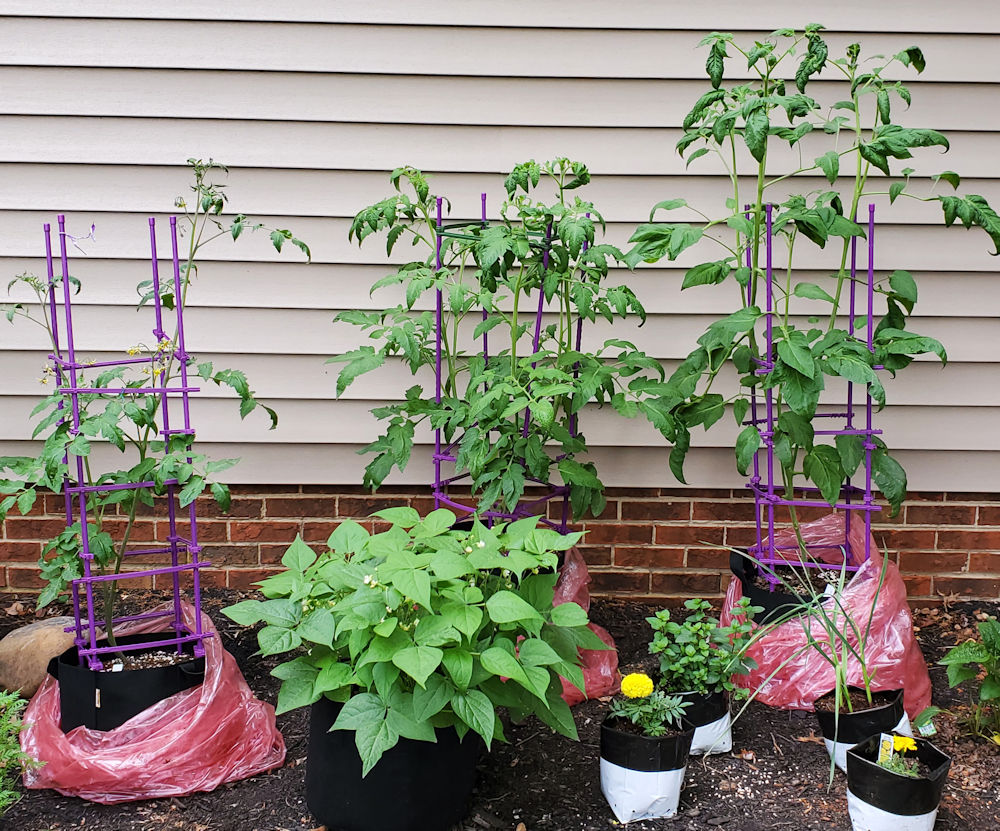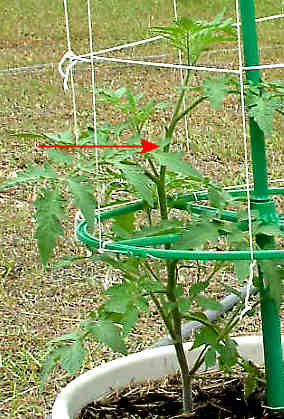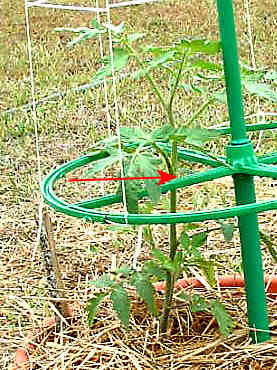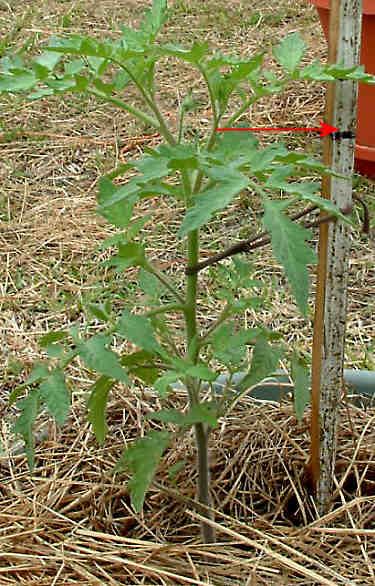growing tomato plants
Tomato Garden May 2020 – What’s Really Growing?
My tomato garden in 2020 has had a wild ride since February. Between my (mostly failed) hydroponics try, a surprise snow, an unpleasant discovery about trees and seeds that either didn’t sprout or didn’t thrive, I’ve had to make lots of changes. So now that it’s May, what’s really growing in my homegrown tomato garden?
Tomato Varieties in the Garden
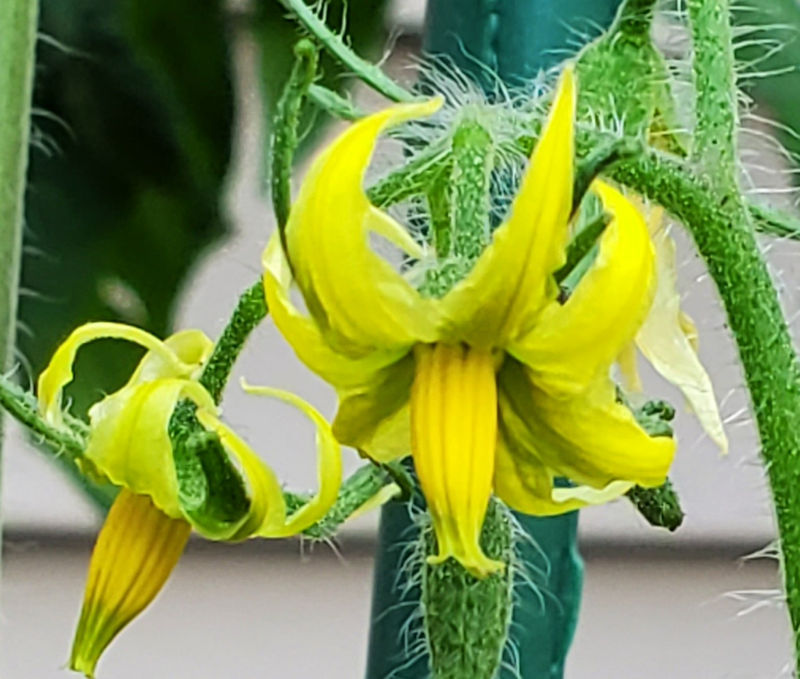 I’ve started tomato seeds from a lot of different varieties, but not all have sprouted and thrived. Some were definitely due to user error (mine), some seemed to be issues with the seeds themselves. For example, I planted six seeds of Red Robin, but only 1 sprouted — go figure. But, here’ a list of what I have in the garden, or are within a couple of weeks from going into their final place in the garden.
I’ve started tomato seeds from a lot of different varieties, but not all have sprouted and thrived. Some were definitely due to user error (mine), some seemed to be issues with the seeds themselves. For example, I planted six seeds of Red Robin, but only 1 sprouted — go figure. But, here’ a list of what I have in the garden, or are within a couple of weeks from going into their final place in the garden.
- Vorlon (which I have nicknamed “Kosh”)
- Blue Beauty
- Girl Girl’s Weird Thing
- Alice’s Dream
- Jochalos
- Red Robin
- Earl’s Faux
- Stormin’ Norman
- Tennessee Yellow Cherry
- Dwarf Arctic Rose
- Dwarf Wild Fred
- Sleeping Lady
- Red Brandywine, Potato Leaf
- Aussie
- Unlabeled dwarf (might be BrandyFred, but not sure yet)
- Cherry Princess Sweet Surprise
Who’s Doing What?
The first four to go outside were Red Robin (miniature early determinate), Vorlon, Blue Beauty and Girl Girl’s Weird Thing (all mid-season indeterminates). They went outside far too early, but in the case of Vorlon, Blue Beauty and Girl Girl’s Weird Thing (which I will abbreviate GGWT), I had to rescue them from a failed hydroponics experiment. And also, I am still trying to find my way growing in Tennessee versus Florida — in late February, my Florida tomato garden was fully planted. So, I jumped the gun — my bad.
Before I tell you how they are all performing, I will say this — next year, I won’t be starting my seeds in late January, because they are ready to go outside by mid-March, and it’s just too chilly for them to thrive. The seeds I planted in March have done the best overall, since we didn’t get really stable weather until late April. (Even then, we got s surprise late freeze in early May, three weeks after our last average frost date.)
Vorlon is the tallest by a fair amount, but GGWT wins the prize for overall size — it’s grown up and out. Blue Beauty is wimpy as a plant, but it’s got more open blossoms than the other two combined. However, for all three of these plants — they started setting out blossoms before the May freeze, and all the blossoms aborted. The second set for each all failed. They are now all in flower and crossing fingers, they will set some tomatoes this time. I guess that is what happens when you try to plant out too soon!
R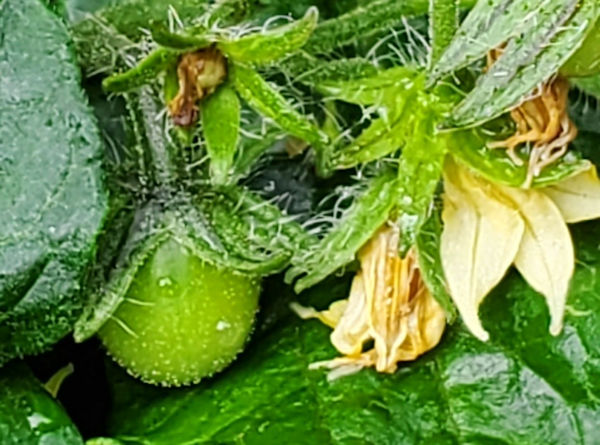 ed Robin won the prize for the first plant to set tomatoes. They are teeny-tiny, but so cute! Not to mention that it has a ton of blossoms, and didn’t react as badly to the late cold weather.
ed Robin won the prize for the first plant to set tomatoes. They are teeny-tiny, but so cute! Not to mention that it has a ton of blossoms, and didn’t react as badly to the late cold weather.
Alice’s Dream and Stormin’ Norman are in the process of creating a large number of blossoms — and they were some of the early March seed starts. Tennessee Yellow Cherry also has a good number of flower buds forming.
Earl’s Faux is a little slow when it comes to flowering, although it’s starting to form buds. It was a mid-February seed start, so it had more cold weather to contend with. I have to admit though — it’s a beautiful plant!
Jochalos is starting to blossom, as is Dwarf Arctic Rose. My unlabeled dwarf tomato is also starting to form buds.
The rest (Dwarf Wild Fred, Sleeping Lady, Aussie, Red Brandywine Potato Leaf and Cherry Princess Sweet Surprise) are a couple more weeks from being ready to be set out into their final garden spots — they were the last sets of seeds I started. I’ve potted them up at least once (twice in the case of Dwarf Wild Fred), but they are in the holding spot — dappled sunlight for a few hours then full sun for another two or three hours.
Some varieties I only have one plant, but some I have multiples. I ended up with three Earl’s Faux, two Alice’s Dream, two Stormin’ Norman. I also have two Aussie (although one might not make it) and a second Tennessee Yellow Cherry. I thought I was losing the older Tennessee Yellow Cherry to the cold, so I started a new seed. Surprise — the original one made it through the rough weather. Hmm, I think I may have two Red Brandywine Potato Leaf plants as well.
I did not grow Pink Brandywine this year. It’s a luscious tomato, but it never produced really well for me when I was in Florida. However, I decided to give Red Brandywine Potato Leaf a try, and see what happens.
So What About the Trees?
This is another thing I’ve had to learn the hard way. In South Florida, our trees never dropped leaves, and also I knew about how many hours of sun the various parts of our yard got, even allowing for changes in the sun’s angle during the year.
Here in East Tennessee, I discovered that my main garden area was getting shaded out when the trees started leafing out. What started out as six hours of full sun dwindled to maybe three hours at one point, with some dappled shade for perhaps another hour. Thankfully, the sun’s angle has changed enough so that the area gets a couple of hours of dappled shade and a little over four hours of direct sun. Not as much as I really want, but our yard is so full of trees I am having to make do.
I did find two other spots that receive about six hours of full sun through the course of the day, so I have more tomatoes there. Plus some peppers, beans, cucumbers, squash and assorted other herbs and flowers.
I also discovered that there is a family of rabbits somewhere nearby, as well as some dastardly squirrels and a chipmunk. Since all my plants are in containers, the bunnies haven’t been a problem yet. Not sure what’s going to happen when the cukes start to trail over the sides.
Definitely not sure what the squirrels and chipmunk will do, when faced with the temptation of garden fruit. Good or bad, I also have some hot peppers which are planted amongst the various tomatoes and other plants. I also discovered that squirrels do not like the smell of peppermint (story for another time), so I have several types of mints and fragrant herbs scattered around as well.
GT Experiment Report 1
The Great Tomato Experiment is underway! This is the first report of the series, and the race is just beginning.
While you can read the full story behind The Great Tomato Experiment, a summary is as follows:
There are three plants, grown from seed from the same packet (plant variety is the heirloom tomato Pineapple).
- One plant is the control plant; it gets treated the same was as my other (non-experiment) tomatoes.
- Another plant is being grown for fruit size, per the book Giant Tomatoes.
- The third plant is being grown for productivity of harvest, per the book How to Grow World Record Tomatoes.
All three tomatoes were planted in 10-gallon containers. Because they are planted in containers, they get fed weekly, although about half strength. FYI, the red arrows in the photo indicate how big the plant was when I originally planted it.
(Note: You can click on each of the photos to see a larger version.)
Fruit Size Plant
The first plant is the one I am growing for the size of the fruit. This plant’s soil is about half and half compost and potting mix. Fertilizer has been mainly Miracle Gro for Tomatoes (half strength), as well as some kelp spray and a little bit of fish emulsion. Oh, and I did also add some worm castings.
This plant is by far the largest of the three, as far as height goes. It’s also a little bit leggier, which I suspect is from the Miracle Gro’s higher nutrient count. Because it’s in a container, the plant gets a little Miracle Gro liquid every week, at half strength. It also gets some kelp liquid once a week.
The first blossom buds appeared on this plant, just this past week. But per the book, I pinched them off — the plant needs to grow some more before setting the first fruits. (Oh boy, was it ever hard to pinch those blossoms off!)
Harvest Size Plant
This plant has been lagging behind, but now it’s starting to catch up some. The mix in the container was 100% compost. I also added worm castings, bone meal and blood meal. The plant gets fish emulsion spray once a week, and now that it’s large enough, also a drink of some (slightly diluted) fish emulsion weekly. It also got some kelp meal, and a once-a-week spray of kelp liquid (“Sea Magic”).
This plant is the stockiest of the three plants, even though it’s shortest in height. The theory behing this is that while plants grown 100% organically take longer to “take off” as far as height, they grow better and healthier once they do start to catch up.
And you know what was interesting? When I walked out to the garden at lunch, this plant was noticeably larger/taller than in the photo (taken yesterday morning). The top leaves now drape over the green bar!
Control Plant
The control plant is growing along nicely so far. It’s planting mix was about 70% compost and 30% potting soil.
As far as fertilizer, it’s been mostly organic — worm castings, fish emulsion, kelp meal and spray. I have also added some Tomatoes Alive! all-natural fertilizer. I also gave the plant a shot of Miracle Gro for Tomatoes (diluted to half-strength) about a week after I planted it . The reason I did this is because I saw the underside of the leaves had some purple veining — a good hint that the plant didn’t have enough phosphorus. It’s doing fine now, though, without any extra Miracle Gro.
As far as height and stockiness goes, it’s somewhere between the fruit size and fruit production plants on both counts. So likely I’ll quit using the Miracle Gro, and concentrate on organic methods from this point out with this plant.
When’s the Next Report?
I figure about every two weeks is a good time period between reports. So look for my next one on The Great Tomato Experiment around the end of March. Can’t wait to compare photos then!
